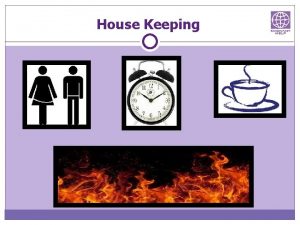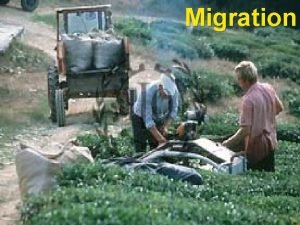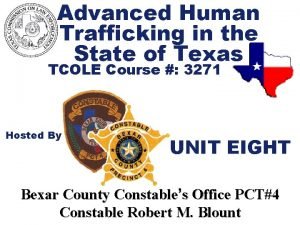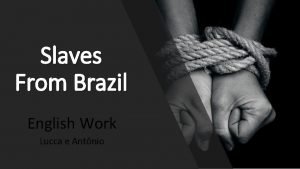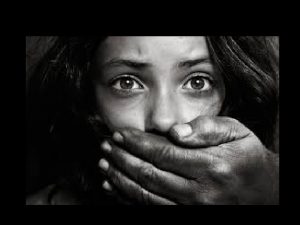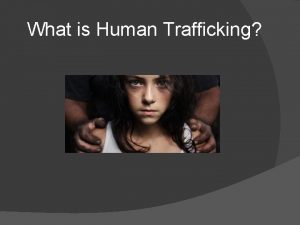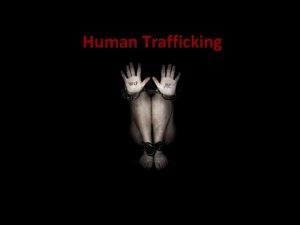Lesson 6 Human Trafficking and International Human Rights





- Slides: 5

Lesson 6: Human Trafficking and International Human Rights Law

Lesson 6: Introduction • Human trafficking occurs for several reasons, including sex trafficking and forced labour. • It occurs throughout the world, with States serving as either points of origin for trafficked persons, intermediary points, and/or the ultimate destination point of those trafficked. • Men, women, and children are all targets of human trafficking. • Human trafficking impacts on many of the rights and freedoms guaranteed under international human rights law.

Lesson 6: International Anti-Trafficking Laws • Although several international human rights law instruments address trafficking in part, the first instrument specifically geared toward human trafficking was adopted as a Protocol to the UN Convention Against Transnational Organised Crime. • The Protocol to Prevent, Suppress and Punish Trafficking in Persons, Especially Women and Children, supplementing the United Nations Convention against Transnational Organized Crime (the Protocol), provides definitions for key terms involved in the legal fight against human trafficking.

Lesson 6: International Anti-Trafficking Laws • The most important of these definitions is that for “trafficking in persons, ” which is defined as “the recruitment, transportation, transfer, harbouring or receipt of persons, by means of the threat or use of force or other forms of coercion, of abduction, of fraud, of deception, of the abuse of power or of a position of vulnerability or of the giving or receiving of payments or benefits to achieve the consent of a person having control over another person, for the purpose of exploitation. Exploitation shall include, at a minimum, the exploitation of the prostitution of others or other forms of sexual exploitation, forced labour or services, slavery or practices similar to slavery, servitude or the removal of organs. ” • The Protocol then provides for criminalization of acts of trafficking in persons and acts associated with it, as well as for legal protections for victims of trafficking, and interstate cooperation for investigations into trafficking in persons.

Lesson 6 Summary • In this lesson, you learned about the prevalent types of human trafficking, the groups trafficked, and the various names elements of the cycle of trafficking. • You became aware that human trafficking impacts on a wide variety of international human rights law. • You then learned about the Protocol to Prevent, Suppress and Punish Trafficking in Persons, Especially Women and Children to the UN Convention Against Transnational Organised Crime and the ways in which it criminalizes human trafficking and seeks to protect the victims of human trafficking.
